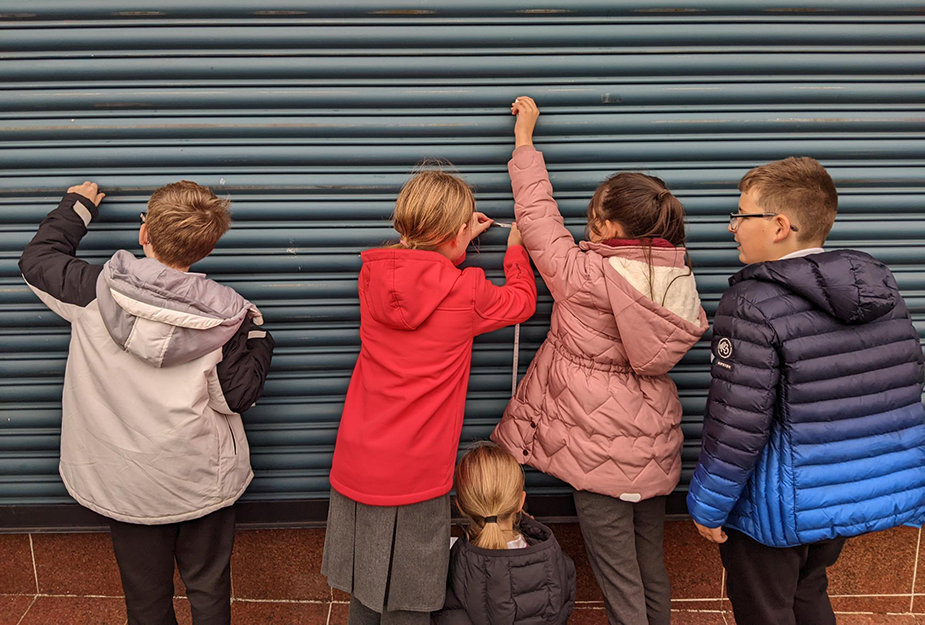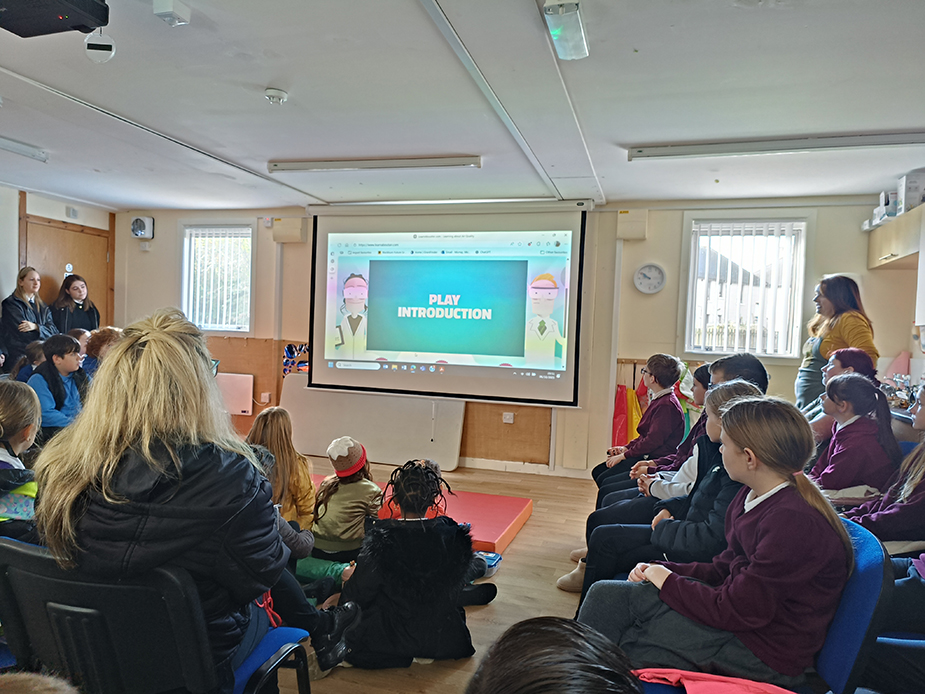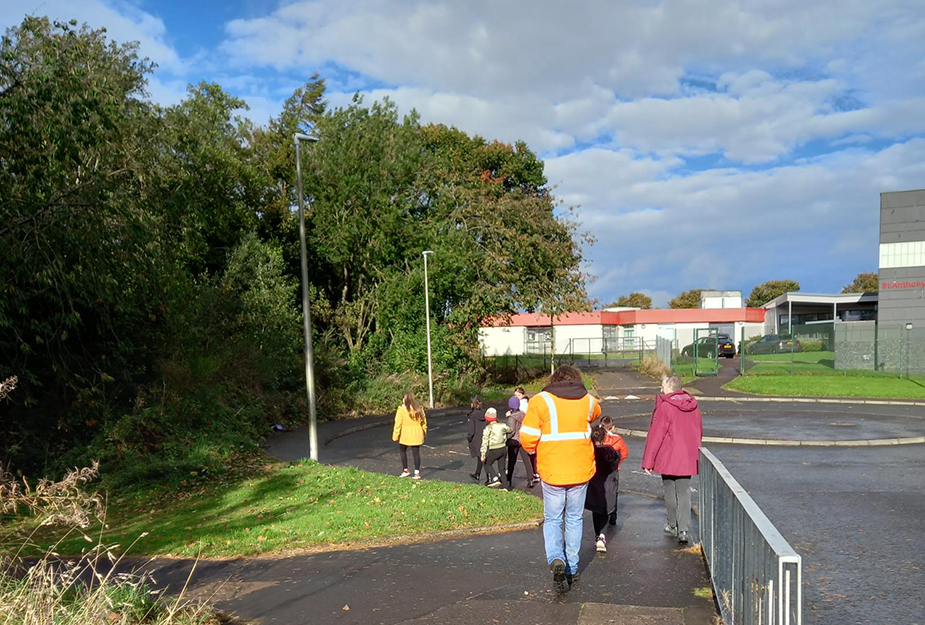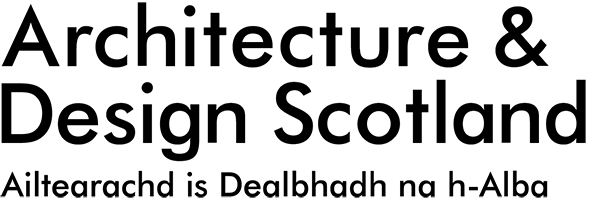Learning Locally - impacts in Armadale

(October 2025) Bringing pupils, educators and community views together through a variety of Place Standard walking tours in Armadale sparked a wave of climate action, collaboration and co-designed learning activities that can reshape how schools connect with place.
In early 2025, we worked with three schools in Armadale in collaboration with West Lothian Council to deliver a Place Standard workshop as part of a walking tour of the local area. From this, we were able to develop our Learning Locally – Co-Designing Sustainable Learning Settings report, which shares the methodology used in the workshop along with examples of "Sustainable Learning Settings" with educators across Scotland.
“This work has the potential to support the forging of a sense of identity for pupils, and rooting schools in their wider community in existing schools and places, building the groundwork for working better together in a place, and supporting more holistic community planning.”
The initiative has had far-reaching impacts locally in Armadale, resulting in better collaborative and complementary work between schools and community organisations. We caught up with Melissa Dunn, Health and Well-being and Active Sustainable Travel Development Officer for Education at West Lothian Council, and Michelle Murray, Community Regeneration Officer for Armadale, Whitburn and Blackburn at West Lothian Council to find out more about what happened next.

Climate action – Armadale Environmental Action Day
In response to the young people’s thoughts during the Place Standard workshop, A collaborative environmental project involving all four local primary schools and Armadale Academy, along with Armadale Community Council, took place on 6 October. The project aimed to engage pupils in meaningful environmental inquiry through hands-on learning experiences, while contributing to the wider Locality Plan for the area.
Each topic has been selected for its relevance to local environmental concerns and its alignment with broader community priorities. Each Primary school took part in one of the following activities on the day, with pupils from Armadale Academy recording the event.
1. Street tree audit
Working with the Tree and Woodland Team Leader from West Lothian Council, this group walked along East Main Street, looking at each tree pit to audit: Was there a tree? Which species was it? And how healthy is it?
Unhealthy and missing trees led to a discussion about why that might have happened, such as issues with the roots impacted by salt on the roads. The children in this group very quickly learned how to identify each of the tree species by their leaves.
2. Pavement parking audit
Local police officers accompanied this group, looking at whether the pavement was safe and accessible, and whether there were cars blocking the space. They focussed on important buildings such as the pharmacy, the health centre and the football club, identifying issues and suggesting solutions to enhance safety and comfort.
3. Air quality monitoring
Working with the West Lothian Council Climate Officer and the West Lothian Climate Hub, this group carried out active research to understand the impacts of pollution at Armadale Cross. Unable to secure air-quality monitors, the children took sticky tape samples of pollution on buildings at different heights, showing considerably darker swabs at exhaust fume heights.
4. Tree discussion
Accompanied by the West Lothian Council Ranger Service, this group looked to visit Black Moss Local Nature Reserve. They observed the different tree species and discussed ‘how we need trees and what jobs they do’. The Black Moss is also an area of peat bog, and its importance as a carbon sink and maintaining this to support climate adaptation was also explained.
The four groups returned to the Dale Hub to design posters for their peers to share what they had learned.
This environmental day is an example of effective collaboration between schools, community organisations, and public agencies promoting active learning, civic responsibility, and environmental awareness. It also provides pupils with the opportunity to contribute meaningfully to the future of their local area.

Collaborative approaches driving local change
The Learning Locally project has also fostered a number of innovations and collaborations between the learning community and community organisations, including the following.
Increased involvement
Building on the initial project, which involved Armadale, Eastertoun and St Anthony’s Primaries, both Armadale Academy and Southdale Primary School have joined the continuation of the learning locally project for 2025/2026 in Armadale.
Improved representation
Armadale Community Council and the Armadale Regeneration Group have valued the Place Standard results generated by the workshop with young people and are using these to inform their work, including the development of a Local Place Plan. A young person from Armadale Academy has taken up a seat on Armadale Community Council, noting that it has already given them a better understanding of the decision-making process and how change happens.
Locally co-ordinated planning between community and schools
Armadale have adopted an initiative called CIP in SIP where Community Improvement Priorities sit alongside Schools Improvement Plans. Each school now has a member of staff who is signed up to attend at least two Armadale Regeneration Group meetings a year, enabling better coordinated planning between school and community activities.
“This learning for sustainability project, albeit short, will support and empower the Armadale community to make informed choices, fosters resilience, and strengthen the Armadale Locality Plan by aligning education with long-term environmental, social, and economic well-being.”
Contributor acknowledgement
Special thanks to Melissa Dunn, Health and Well-being and Active Sustainable Travel Development Officer for Education, and Michelle Murray, Community Regeneration Officer for Armadale, Whitburn and Blackburn, both at West Lothian Council, whose valuable contributions and expertise helped shape this story.
All images credited to Michelle Murray from West Lothian Council.
Co-designing sustainable learning settings
The full report is available on our website, which includes detailed outcomes, lessons learned and how it can be applied nationally.
